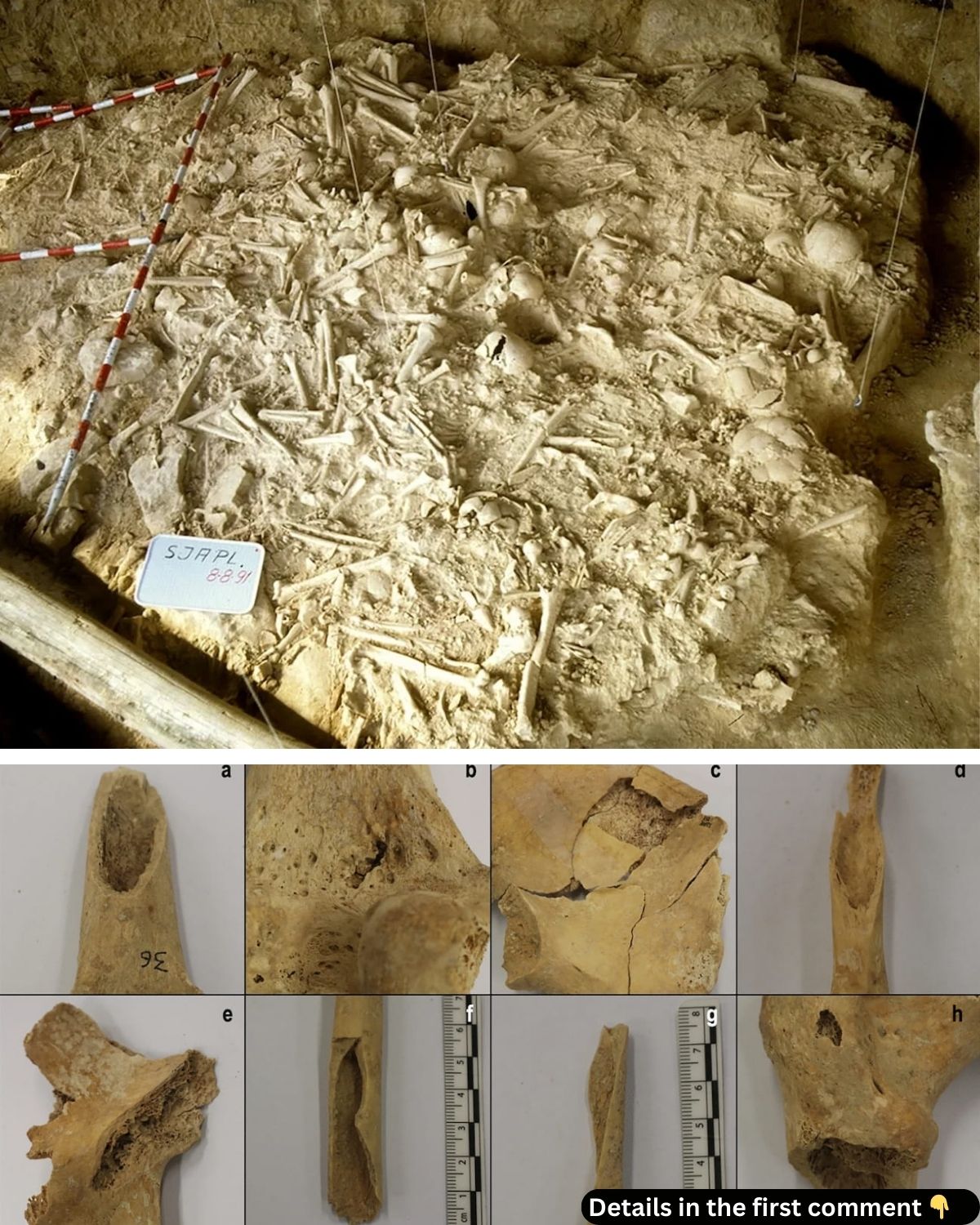Over 5,000 years ago, a mass grave was unearthed in northern Spain, offering a shocking glimpse into ancient warfare. Initially thought to be the remnants of a massacre, new analysis of the bones reveals a different story—one of long-term, sophisticated combat among early Neolithic societies. This discovery is rewriting the history of warfare in Europe, pushing back the timeline of large-scale battles by over a millennium. As researchers dig deeper into the past, the evidence sheds light on the complexities of human conflict long before the Bronze Age.
The Discovery of the San Juan ante Portam Latinam (SJAPL) Burial Site
The SJAPL rock shelter, located in the town of Laguardia, was first excavated in 1991, and the burial deposit was found to contain the remains of both men and women, including adults and children. Radiocarbon dating places the burial between 3380 and 3000 B.C., a period known as the Late Neolithic.
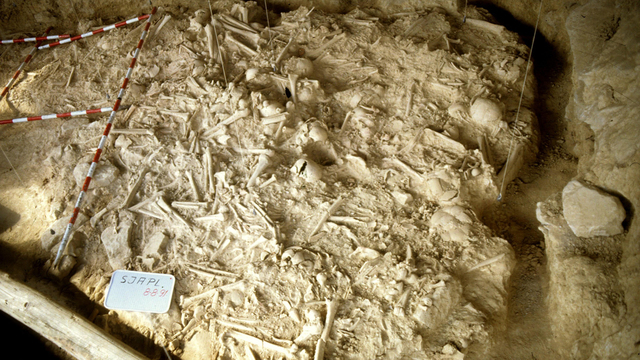
Upon initial discovery, the position and interweaving of the skeletal remains, alongside the presence of weapons such as arrowheads and axes, led archaeologists to conclude that the site might have been a mass grave from a violent massacre. Yet, as the team revisited the site with modern techniques and fresh eyes, new conclusions were drawn—this was not an isolated event of a sudden attack but the result of ongoing regional conflicts and warfare.
Video
Tune into this video to explore the excavation of mass graves from the Spanish Civil War era, uncovering the painful history and human stories behind the remains.
Skeletal Analysis: Evidence of Warfare
Upon reanalyzing the skeletal remains, the research team, led by Teresa Fernández-Crespo of the University of Valladolid, found striking evidence of violence. They identified 107 cranial injuries, many of which were likely caused by blunt-force trauma from weapons such as stone maces or wooden clubs.
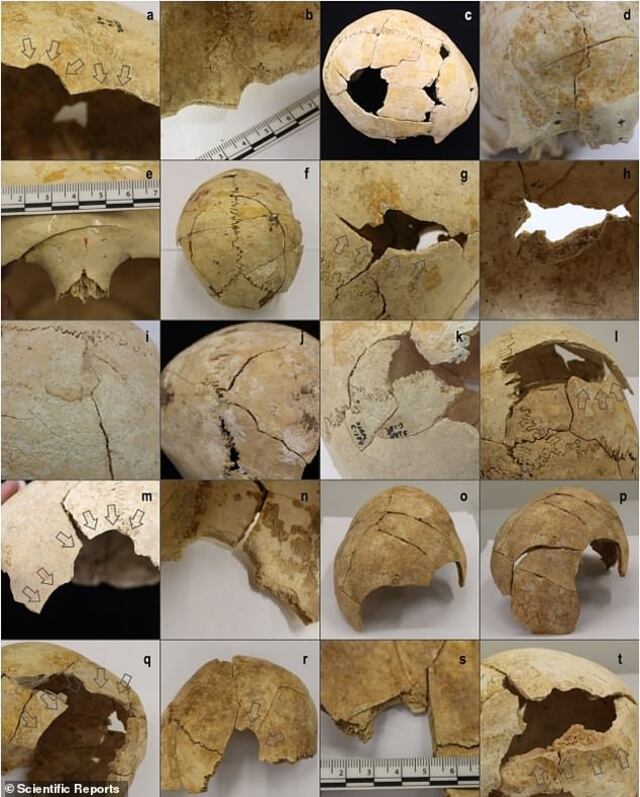
Interestingly, most of the injuries were found on the skulls of men, with males disproportionately affected by both lethal and non-lethal trauma. In addition to cranial injuries, there were 22 fractures in the limbs and 25 injuries to other body parts, most notably found in adult males. The findings suggest that the majority of those buried in the grave were combatants involved in violent encounters, and that these individuals suffered a variety of injuries across a prolonged period, likely caused by raids and skirmishes.
Reinterpreting the Mass Grave: A Case of Warfare, Not a Massacre
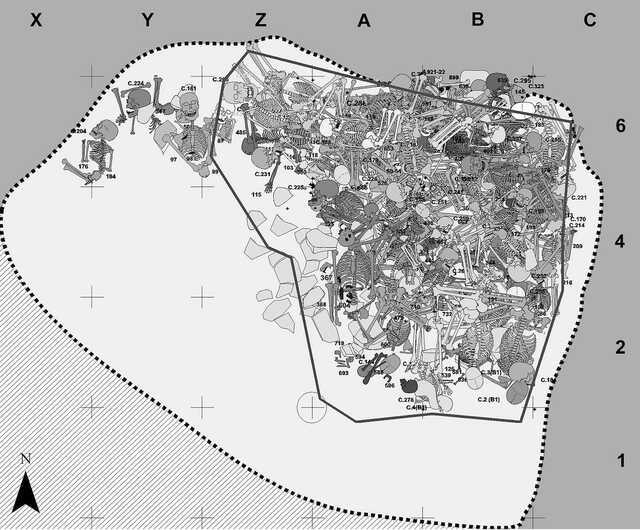
The new interpretation of the grave has shifted the narrative away from the idea of a sudden massacre. Instead, the evidence points to a pattern of prolonged warfare, with the individuals killed in separate raids or battles over an extended period. This insight has significant implications for our understanding of Neolithic conflict, as it shows that early human societies engaged in more sophisticated and organized forms of combat than previously thought. Rather than sporadic raids lasting only a few days, as was once believed, these battles may have been drawn-out affairs that involved territorial disputes, resource competition, and complex social interactions between rival groups.
The Role of Men in the Conflict: Implications for Social Structures
The analysis also reveals that the majority of the injured and killed were male, with adolescent and adult men accounting for nearly 98% of the unhealed injuries. This suggests that men were the primary combatants in these battles, while women and children were likely spared from direct involvement in the conflict.
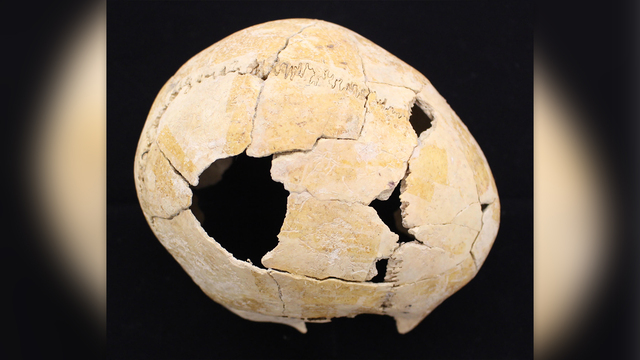
This trend mirrors patterns seen in other historical conflicts, where men were often the primary warriors and protectors of their communities. The predominance of male injuries may also indicate that these individuals were part of a warrior class, whose role in society was to defend their settlements and protect resources.
The Neolithic Communities: Tensions and Resources
In the Late Neolithic period, communities were primarily agrarian, relying on the cultivation of crops such as wheat and barley, as well as the domestication of animals like cattle, sheep, and pigs. However, this period was also marked by social complexity and population growth, which led to greater competition for resources. Evidence from the skeletal remains suggests that food scarcity and environmental stress may have exacerbated tensions between different cultural groups, leading to conflict.
The struggle for land, water, and other vital resources would have been a significant driving force behind the violence that took place, with neighboring groups competing for control of the most fertile and resource-rich areas.
Weapons of the Conflict: Flint Arrowheads, Stone Axes, and More
The presence of numerous flint arrowheads, stone blades, and polished axes found with the skeletal remains further supports the idea that these individuals were involved in combat. These weapons were used in the Neolithic period for hunting and defense, but their association with the skeletons points to their use in organized battles rather than casual skirmishes. The discovery of arrowhead damage on some of the bones suggests that long-range weapons played a significant role in the conflict. These findings offer valuable insight into the weapons technology of the time and how these ancient societies engaged in violent confrontations.
The Significance of the Findings for Neolithic Warfare
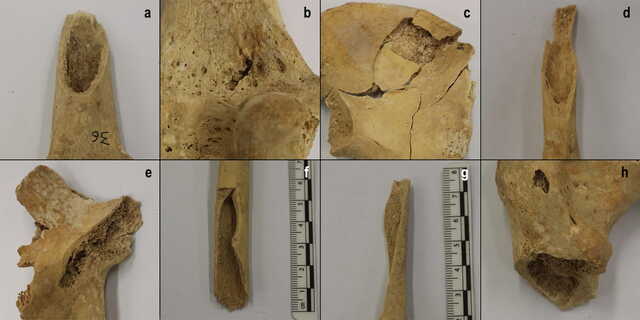
This discovery is one of the first to provide direct evidence of large-scale warfare during the Neolithic period in Europe, pushing back the timeline for organized combat by over a millennium. The high rates of trauma, particularly among men, and the long duration of the conflict challenge previous assumptions that Neolithic warfare was limited to small-scale raids or skirmishes. Instead, it points to a more complex and organized form of warfare, possibly involving larger groups and extended campaigns over time. This finding underscores the idea that Neolithic societies were more socially and militarily sophisticated than previously imagined.
Video
Watch this video from Al Jazeera English to witness the exhumation of victims from mass graves in Catalonia, revealing the human cost of the Spanish Civil War.
Conclusion: Challenging Assumptions in Neolithic Warfare
The discovery of this mass grave in Spain, along with the new analysis of the skeletal remains, offers a fresh perspective on Neolithic warfare. The evidence suggests that early human societies were capable of engaging in prolonged, organized conflict, driven by resource competition and social tensions. This finding challenges previous assumptions about the nature of warfare in ancient Europe and opens up new avenues for research into the social, political, and economic structures of Neolithic communities.
By reexamining old excavations with new methodologies, archaeologists have provided a more nuanced understanding of the past, one that highlights the complexity of human societies long before the rise of major civilizations. The findings from San Juan ante Portam Latinam remind us that war, conflict, and human resilience have shaped our history in ways we are only beginning to fully understand.
